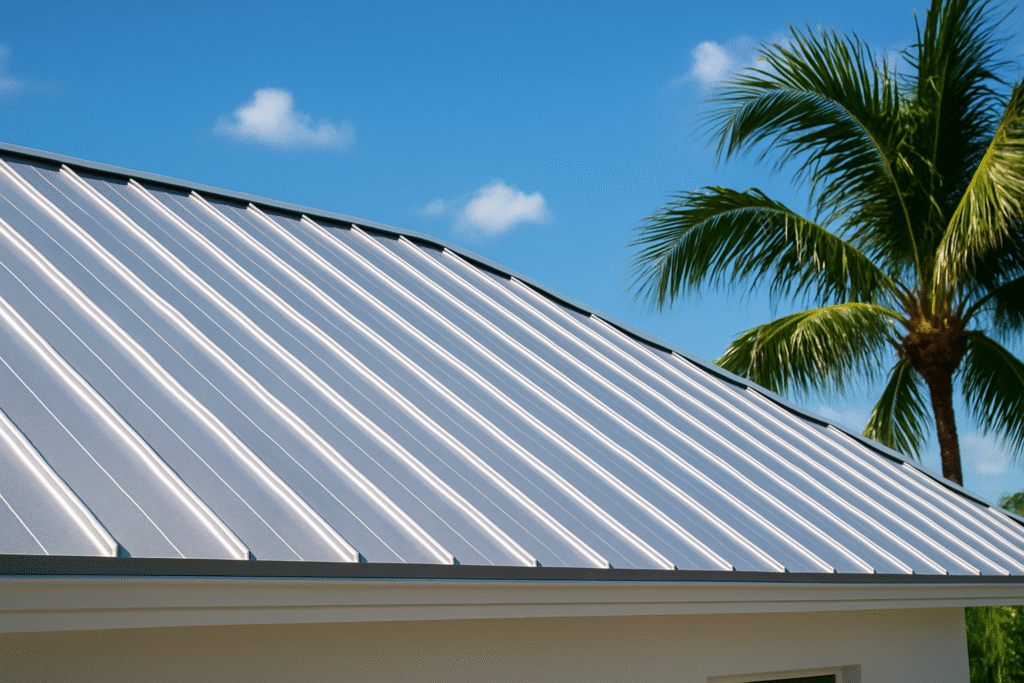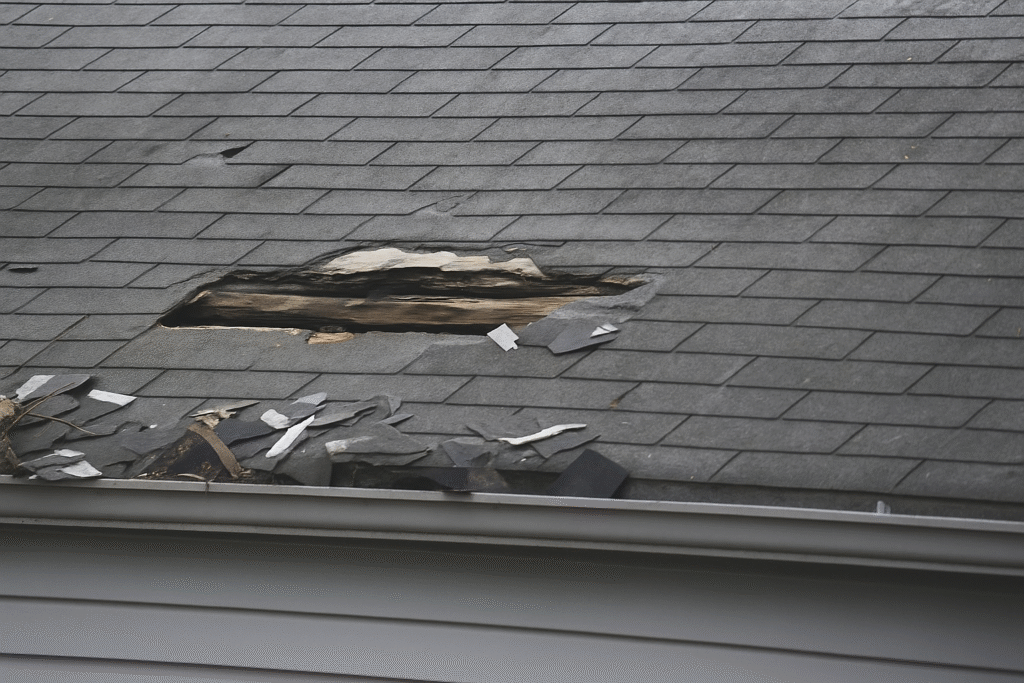What Is Parametric Insurance for Roofs?
Posted 10.14.2025 | 7 Minute Read

When hurricane season arrives in South Florida, your roof is often top of mind. Will it hold up against high winds? If it’s damaged, how quickly can you get it fixed? You may have heard about parametric insurance as a way to get money faster after a storm, but it works very differently from a standard policy.
This guide explains what parametric insurance is, how it differs from your homeowners policy, and whether it’s a good fit for your home.
How Does Parametric Insurance Work?
Unlike traditional insurance that pays for the actual cost of damage, parametric insurance pays a predetermined, fixed amount when a specific event—or “trigger”—occurs.
For example, you might buy a policy that states it will pay you $50,000 if a hurricane with sustained wind speeds of 130 mph or higher is recorded within 50 miles of your home.
If that storm hits, the insurance company doesn’t send an adjuster to inspect your roof. Instead, they refer to data from an independent, objective source like the National Hurricane Center. If the data confirms the wind speed trigger was met, the payment is automatically sent to you, often within days. The entire process is designed for speed, getting cash into your hands when you need it most.
Quick Summary: Parametric insurance pays a fixed amount based on a storm’s intensity (like wind speed), not the actual damage to your home.
How Is Parametric Insurance Different From My Homeowners Policy?
Your regular homeowners insurance is designed to cover the specific damage your property sustains. This process involves filing a claim, scheduling an adjuster’s visit, and negotiating the repair costs, which can take weeks or months.
Parametric insurance skips these steps. It focuses only on whether the storm met your policy’s trigger conditions. The table below breaks down the key differences.
| Feature | Traditional Homeowners Insurance | Parametric Insurance |
| Payout Basis | Based on the actual cost of your damage, assessed by an adjuster. | A fixed, pre-agreed amount paid when a specific event trigger is met (e.g., wind speed). |
| Payout Speed | Weeks to months, especially after a major storm. | Days to a few weeks. |
| Inspection Required? | Yes, an adjuster must inspect the damage before a claim is paid. | No, payout is based on third-party data (like weather reports). |
| What It Covers | Multiple types of damage to your home as defined in your policy. | Only the specific, single event defined in the policy (e.g., a Category 4 hurricane). |
What Are the Benefits of Parametric Insurance?

Get Cash When You Need It Most: After a hurricane, having immediate access to funds is critical. A parametric policy can put money in your account within days, allowing you to pay for temporary repairs, cover living expenses if you’re displaced, or hire a contractor before they get booked up. This speed is a significant advantage while you wait for your traditional claim to be processed.
Avoid Fighting Over Claims: Because payment is based on objective weather data, there are no debates about the extent of your damage or whether a specific repair is covered. If the storm’s intensity matched the trigger in your policy, you get paid. This simplicity removes the stress and uncertainty of a typical claims process.
Cover Your High Deductible: Many South Florida homeowners have hurricane deductibles of $10,000, $20,000, or even more. A payout from a parametric policy can be used to cover this deductible, reducing your out-of-pocket expenses and making it easier to start repairs right away.
What Are the Downsides to Consider?

Your Payout Might Not Match Your Damage: The biggest risk with parametric insurance is that the fixed payout may not align with your actual repair costs. Your roof could sustain $80,000 in damage, but if your policy pays only $50,000, you’ll rely on your main homeowners policy for the rest. Even worse, your roof could be seriously damaged by a storm whose winds were just shy of the trigger—for example, 128 mph instead of 130 mph. In that case, you would receive nothing from the parametric policy. This potential mismatch is known as “basis risk.”
Important Consideration: The “Basis Risk”. The biggest risk with parametric insurance is that your payout might not match your needs. Your home could suffer major damage, but if the storm’s measured intensity falls just short of your policy’s trigger, you receive nothing.
It’s an Additional Policy and Cost: Parametric insurance does not replace your traditional homeowners coverage; it’s a supplement. This means you will need to maintain both policies and pay two separate premiums. You are paying extra for the speed and certainty of the payout.
Does My Roof Type Affect My Insurance?
Yes, absolutely. Whether you have a parametric policy or not, the type and condition of your roof directly impact your insurance rates and your home’s safety.
- Metal Roofs: Considered the gold standard in South Florida, metal roofs can withstand winds up to 180 mph. Their strength and durability often earn homeowners better rates from insurance companies.
- Tile Roofs: Concrete and clay tile roofs are another strong and popular choice, offering excellent protection against winds over 100-130 mph.
- Hip Roofs: The shape of your roof also matters. A hip roof, which slopes down on all four sides, is more aerodynamic and performs better in high winds than a gabled roof. Insurers often provide discounts for this design.
- Roof Age: In Florida, insurers typically require a roof to have at least five years of remaining useful life. If your roof is over 15 years old, you will likely need an inspection to renew your policy. A newer roof means better protection and more affordable insurance.
Is Parametric Insurance a Good Choice for My Home?
Parametric insurance is particularly useful for homeowners in high-risk hurricane zones, especially those with a high deductible that would be difficult to cover out-of-pocket after a storm. A quick payout can provide the immediate funds needed to pay that deductible, allowing you to start the repair process without delay. This fast access to cash also helps cover other urgent expenses, like temporary lodging or supplies, offering an extra layer of financial protection and peace of mind while you wait for your traditional insurance claim to be processed.
The key is to understand that you are buying coverage for a storm’s intensity, not your home’s specific damage. It provides immediate resources while your traditional insurance claim moves forward.
Pro Tip: While insurance provides a financial safety net, the best protection is a strong, well-maintained roof built to handle hurricane-force winds.
The Best Insurance Is a Hurricane-Ready Roof
Ultimately, the best insurance policy is a strong, well-maintained roof that can withstand South Florida’s weather. Regular maintenance helps you find and fix small problems before they become costly disasters, while quality materials and professional installation provide peace of mind when a storm is on the way.
At Coastal Roofing of South Florida, we help homeowners build resilience against storms. We install hurricane-resistant roofing systems designed for our climate and can help you understand how your roof impacts your insurance costs. Schedule your free inspection today. We’ll provide an honest assessment of your roof’s condition and recommend solutions that fit your home and budget. No pressure, just helpful advice from local experts who know South Florida roofs. Because when the next storm comes, you’ll want to know your roof is ready.
Recent Articles
